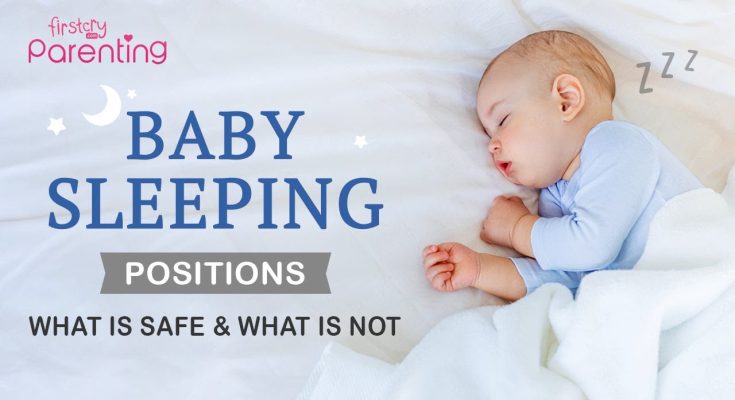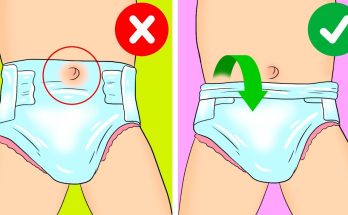As a new parent, ensuring your baby sleeps safely and soundly is a top priority. One of the most discussed—and sometimes confusing—topics is baby sleeping positions. While babies can look adorable in various poses, not all sleeping positions are safe. Understanding which positions are safe, risky, or developmentally normal can help reduce anxiety and promote healthier sleep for your little one.
Why Sleeping Position Matters
A baby’s sleep position is more than just a comfort choice. It plays a significant role in preventing Sudden Infant Death Syndrome (SIDS), ensuring proper breathing, and supporting healthy physical development.
According to pediatric guidelines, the safest way for a baby to sleep is on their back. This recommendation has dramatically reduced SIDS cases since it was introduced in the 1990s.
1. Back Sleeping (Supine Position) – Safest Position
Sleeping on the back is the gold standard for infant sleep.
Why it’s recommended:
-
Reduces the risk of SIDS significantly
-
Keeps the airway open and less likely to be blocked
-
Easier for babies to breathe freely
Tips for back sleeping:
-
Always place your baby on a firm mattress with no loose bedding or soft toys.
-
Use a fitted sheet and avoid blankets or pillows in the crib.
-
Make sure the baby’s head is positioned differently each night (left, center, right) to avoid flat spots on the head (positional plagiocephaly).
2. Side Sleeping – Not Recommended for Newborns
Side sleeping used to be seen as a safe alternative, but newer studies advise against it, especially for newborns under 12 months.
Risks of side sleeping:
-
Babies can easily roll onto their stomachs from this position, increasing SIDS risk.
-
Unstable posture, especially for newborns who can’t correct their position.
If your baby naturally rolls to the side, gently reposition them onto their back.
3. Stomach Sleeping (Prone Position) – High Risk
Stomach sleeping is strongly discouraged in babies under 1 year unless advised by a medical professional for specific health reasons.
Why it’s risky:
-
Increases risk of suffocation and overheating
-
Babies may re-breathe their own exhaled air, reducing oxygen intake
Exceptions: If your pediatrician suggests stomach sleeping due to reflux or other medical conditions, it should only be done under close supervision.
4. Tummy Time – Only When Awake
While stomach sleeping is unsafe, tummy time is essential when the baby is awake and supervised. It strengthens neck, shoulder, and arm muscles and helps prevent flat spots on the back of the head.
Tips for tummy time:
-
Start with short sessions (2–3 minutes) a few times a day.
-
Use toys, a mirror, or your face to engage the baby during tummy time.
-
Gradually increase the duration as your baby gets stronger.
5. Rolling Over During Sleep – What To Do
At around 4–6 months, many babies start rolling from back to tummy and vice versa. If your baby rolls onto their stomach during sleep:
-
Don’t panic. If they can roll on their own, it’s generally safe.
-
Keep putting them to sleep on their back, but let them find their own comfortable position if they can roll both ways.
-
Ensure the sleep environment is safe—no loose bedding, toys, or bumper pads.
6. Using Sleep Positioners – Avoid Them
You might see products marketed as sleep positioners or wedges to “keep your baby safe.” However, most pediatric experts and the FDA warn against them.
Why avoid them:
-
They can cause suffocation or trap the baby in unsafe positions.
-
Babies can slide or roll into dangerous positions against these items.
Stick to a flat, firm surface with no extras.
Conclusion
While it’s tempting to let your baby nap in cute or seemingly cozy positions, safety must come first. The back sleeping position is the only position recommended for infants under one year unless directed otherwise by a healthcare provider. As babies grow and gain strength, they will naturally start to move and find positions that are both safe and comfortable.
As a parent, your role is to provide a safe sleep environment—firm mattress, no loose items, and always starting sleep on the back. Combine this with daily tummy time and supervised play to support your baby’s development.
When in doubt, always consult your pediatrician, especially if your baby has special health needs or developmental concerns. Remember, good sleep is not just about duration—it’s about safety.



